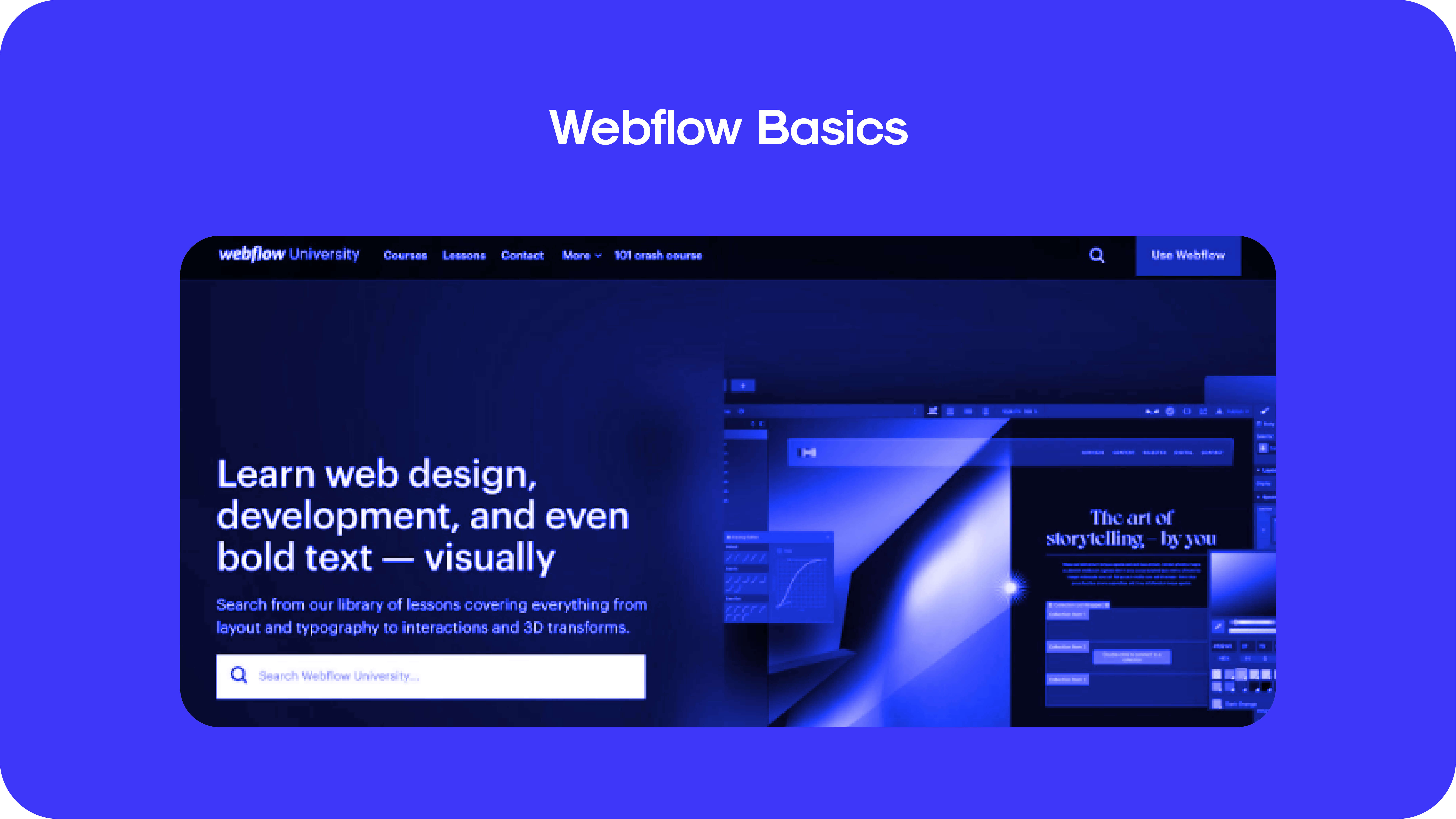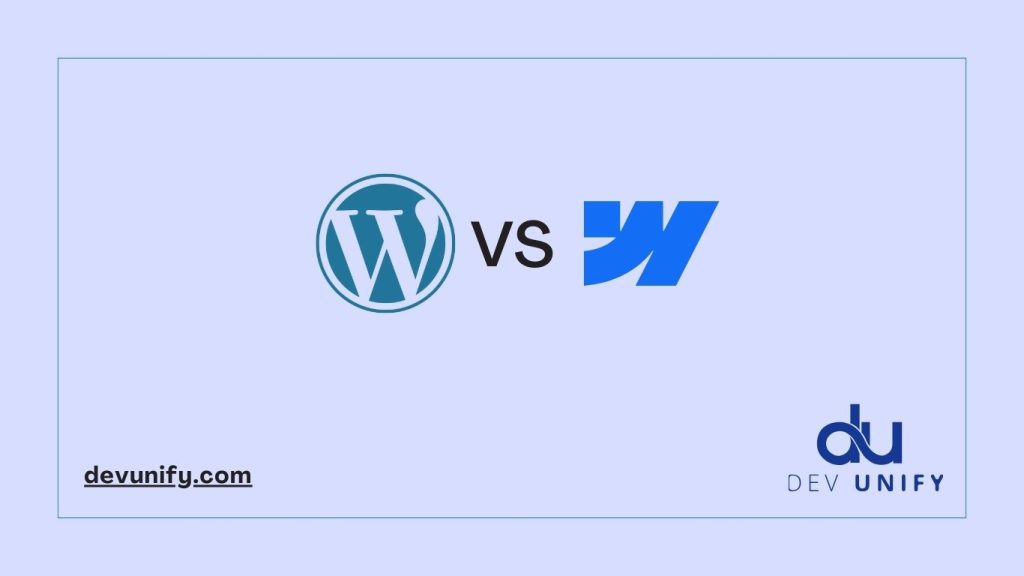WordPress Vs Webflow: WordPress and Webflow are two popular website-building platforms with distinct advantages and differences. We’ll explore the key features, usability, design flexibility, and pricing options to help you decide which platform is the best fit for your specific needs.
Whether you’re looking for a user-friendly CMS with a wide range of plugins or a design-focused platform with intuitive visual editing capabilities, WordPress and Webflow offer unique solutions. By understanding their strengths and weaknesses, you can make an informed decision on which platform is most suitable for your website project.
Ease Of Use
WordPress and Webflow are two popular platforms for building websites, each with its own advantages. One factor that significantly impacts user experience is the ease of use. WordPress, known for its user-friendly interface, provides a familiar environment for users accustomed to traditional content management systems. Its intuitive drag-and-drop functionality makes it easy to create and customize websites without much technical expertise. Webflow, on the other hand, offers a sleek and modern interface that appeals to designers. Its drag-and-drop editor allows for seamless design and layout adjustments. When it comes to the learning curves, WordPress may require a bit more time to understand the platform’s functionalities, while Webflow offers a more straightforward learning process. Both platforms have extensive online documentation and support communities to help users troubleshoot any issues and improve their skills. Ultimately, the decision between WordPress and Webflow depends on the user’s preferences and requirements.

Credit: www.vezadigital.com
Design Capabilities
Customizable themes and templates in WordPress: WordPress offers a wide range of customizable themes and templates that allow users to create unique websites according to their needs. With a vast library of themes available, users can easily find a design that suits their brand and customize it further using the built-in customization options.
Advanced design features in Webflow, such as flexbox and grid: Webflow provides advanced design features like flexbox and grid, which allow designers to create complex and dynamic layouts with ease. These features are particularly helpful for designing responsive websites that work seamlessly across different screen sizes.
Ability to create unique and visually stunning designs: Both WordPress and Webflow offer the flexibility to create visually stunning designs. However, Webflow gives designers more control over every aspect of their design as it allows them to build websites from scratch without any limitations. This level of customization enables designers to create truly unique and visually stunning websites that stand out from the crowd.
Seo Features
WordPress and Webflow are both popular platforms for building websites, but when it comes to SEO features, there are some differences to consider. WordPress offers a range of built-in SEO plugins, such as Yoast SEO and All in One SEO Pack, which can help you optimize your website for search engines. These plugins provide features like XML sitemaps, meta tags, and keyword optimization, making it easier to improve your website’s visibility in search engine results.
On the other hand, Webflow offers SEO optimization options that are integrated directly into the platform. This includes the ability to create meta tags, customize URLs, and manage alt text for images. While Webflow doesn’t have the same extensive range of SEO plugins as WordPress, its built-in features make it a viable option for optimizing your website.
Overall, the SEO capabilities and ease of implementation can vary between WordPress and Webflow. If you prefer a platform with a wide range of SEO plugins and customizable options, WordPress may be the better choice. However, if you’re looking for a platform that integrates SEO directly into its features, Webflow can be a suitable option.
E-commerce Solutions
WordPress is a powerful content management system that offers seamless integration with WooCommerce, making it an excellent choice for building e-commerce websites. With WooCommerce, you can easily set up an online store, add products, manage inventory, and process payments. The platform offers a wide range of themes and plugins to customize your store’s design and functionality. It also provides advanced features like coupon codes, shipping options, and product variations.
On the other hand, Webflow offers robust e-commerce capabilities with its own native solution. It provides a visual drag-and-drop editor, allowing you to easily design and customize your online store. Webflow’s e-commerce features include product management, inventory tracking, and secure checkouts. It also offers the flexibility to create unique and visually appealing designs without the need for coding.
When it comes to evaluating the features and flexibility for online stores, both WordPress with WooCommerce and Webflow offer powerful solutions. It ultimately depends on your specific requirements and preferences. WordPress is a more established platform with a vast ecosystem of themes, plugins, and developers, while Webflow provides a more visually focused approach to e-commerce website design.
Performance And Speed
In terms of performance and speed, both WordPress and Webflow offer optimization options to enhance the user experience. WordPress provides a range of plugins and caching tools that can improve website speed and performance. By leveraging these options, website owners can optimize images, minify CSS and JavaScript files, and enable browser caching.
On the other hand, Webflow’s optimized hosting and CDN (Content Delivery Network) automatically optimize website assets and ensure faster loading times. With built-in image optimization and asset compression, Webflow eliminates the need for manual optimizations.
When it comes to the assessment of performance and loading speed, it depends on various factors such as website size, content, and customization. WordPress websites can perform exceptionally well when properly optimized, while Webflow’s dedicated infrastructure and optimized hosting ensure fast loading times.
| WordPress | Webflow |
|---|---|
| Plugins and caching tools | Optimized hosting and CDN |
| Manual optimizations | Built-in optimization features |
Scalability And Flexibility
WordPress plugins and extensions: WordPress is known for its extensive library of plugins and extensions, allowing users to customize their websites to their specific needs. With a plethora of options available, website owners can easily enhance functionalities and add new features to their WordPress sites.
Webflow’s integrations and third-party tools: While Webflow may not have as many plugins and extensions as WordPress, it offers a variety of integrations and third-party tools that can still enhance the functionality of a website. These integrations and tools provide additional flexibility and customization options for Webflow users.
Comparison of the platforms’ scalability and adaptability to business needs: Both WordPress and Webflow can be scaled and adapted to meet the needs of businesses. WordPress, with its vast range of plugins, is highly scalable and can handle large amounts of content. Webflow, on the other hand, offers a more intuitive and streamlined approach to scalability, making it a suitable choice for businesses looking for a visually appealing and user-friendly website.
Community and Support
When it comes to community and support, WordPress has a large community and extensive documentation. The platform has been around for years, so there are numerous online forums, discussion boards, and social media groups where users can get help and connect with other WordPress enthusiasts. Additionally, the WordPress website itself provides a vast amount of documentation and tutorials.
On the other hand, Webflow also offers support channels and resources for its users. They have a help center with articles and video tutorials that cover different aspects of the platform. Webflow also hosts community forums where users can ask questions and get assistance. Furthermore, they offer priority support for paid plans, ensuring that users receive timely help.
In conclusion, both WordPress and Webflow provide support systems for their users. While WordPress has a larger community and more extensive documentation, Webflow offers resources specifically tailored to its platform. Users can evaluate these support systems based on their individual needs and preferences.
Pricing And Cost
WordPress and Webflow offer different pricing and cost structures, with WordPress being more cost-effective for beginners and Webflow providing more advanced features for businesses willing to invest in their websites.
| Pricing and Cost | |
|---|---|
| Cost breakdown of using WordPress, including hosting and premium plugins | Webflow’s pricing plans and additional expenses |
| WordPress offers a range of options for website creation, but it also has associated costs. The cost breakdown includes hosting fees, which can vary depending on the hosting provider you choose. Additionally, premium plugins may be required to extend the functionality of your WordPress site. These plugins often come with a price tag, and their costs can add up over time. It’s important to consider both the initial costs of setting up a WordPress site and the ongoing expenses of maintaining and updating it. | Webflow, on the other hand, has a structured pricing plan that includes hosting and other features. The pricing plans range from basic to advanced, allowing for flexibility based on your needs. While the upfront cost may be higher compared to WordPress, Webflow’s pricing includes hosting, which simplifies the overall cost calculation. However, it’s also important to consider any additional expenses such as custom domains or premium integrations that may incur extra costs. When comparing the cost-effectiveness of both platforms, it’s important to evaluate not only the initial expenses but also the long-term costs associated with running and maintaining a website. |
| Comparison of the cost-effectiveness of both platforms | |
| In summary, the cost of using WordPress involves hosting fees and potential expenses for premium plugins. On the other hand, Webflow offers structured pricing plans that include hosting but may have additional costs for custom domains or premium integrations. When considering cost-effectiveness, it’s essential to evaluate both the upfront and ongoing expenses of each platform. Assessing your website’s needs and comparing the capabilities and costs of WordPress and Webflow will help you make an informed decision regarding the most suitable platform for your website. | |
Frequently Asked Questions For WordPress Vs Webflow
Should I Switch From WordPress To Webflow?
Consider switching from WordPress to Webflow for a more user-friendly and visually appealing website. Webflow offers responsive design, easy customization, and built-in SEO tools. It’s an intuitive platform that streamlines the web development process without the need for coding knowledge.
What Is The Downside Of Using Webflow?
Webflow has a learning curve for beginners, limited CMS functionality, and higher pricing for some features. The platform may not be suitable for complex e-commerce sites and requires technical knowledge for customization.
Why Is Webflow So Popular?
Webflow is popular due to its user-friendly interface, powerful design capabilities, and flexibility in creating responsive websites without the need for coding knowledge. Its SEO features and ability to integrate with various third-party tools further enhance its appeal to businesses and individuals.
Is Webflow Still Popular?
Yes, Webflow is still popular. It remains a widely used platform for website development.
Conclusion
To sum up, both WordPress and Webflow offer unique benefits for building websites. WordPress is a popular and versatile platform, allowing for customization and a vast library of plugins. On the other hand, Webflow offers a visually appealing and intuitive interface, perfect for designers.
Whether you prefer flexibility or user-friendliness, it ultimately depends on your needs and preferences. So, make sure to consider your goals and resources before making your decision. Happy website building!
